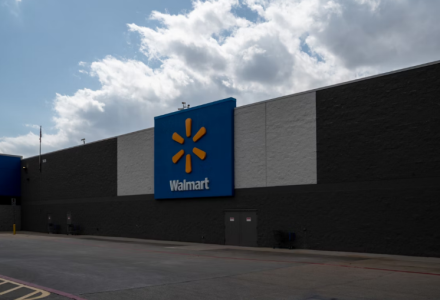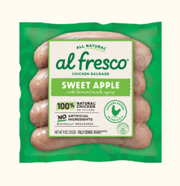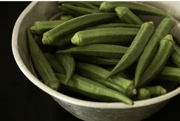Walmart responds to new tariffs: which prices go up and which stay locked in
- Replies 0
Some changes arrive without much fanfare, quietly slipping into daily routines and noticed only by those who make a habit of reading between the lines.
Others become unmistakably clear when you're standing in the checkout line, trying to make sense of why your usual cart of groceries suddenly costs noticeably more than it did just a few weeks ago.
In this era marked by shifting global policies and unpredictable economic decisions, even the smallest adjustments can ripple outward with surprising speed.
And if you're a regular Walmart shopper, there's a good chance you're already feeling the subtle impact of something broader playing out behind the scenes.
Walmart, the country’s biggest retailer, is often the first place American families feel economic shocks—and this time is no different.
With tariffs imposed under Trump’s administration now taking full effect, shoppers are noticing price jumps in select departments.
As Walmart CFO John David Rainey told CNBC, “The magnitude of these increases is more than any retailer can absorb.” His warning came as the store rolled back deals in some areas while increasing tags in others.
Over a seven-week stretch, CNBC tracked about 50 items at a New Jersey Walmart location and found price hikes in more than a dozen of them

Among the hardest hit were household staples and baby products—many imported from China, where new 30% tariffs have taken hold.
A 12-piece “Beautiful” cookware set co-founded by Drew Barrymore jumped from $99 to $149, while the matching frying pan climbed to $31.97 from $24.97. A Graco convertible stroller and car seat combo leapt from a rollback price of $199.99 to $299.
Clothing wasn't spared either, with men’s Levi’s Signature jeans increasing from $23.98 to $24.98. Levi’s CFO Harmit Singh told CNBC, most of our goods come from countries like Pakistan, Bangladesh and Indonesia, which now face 10% tariffs—with potential hikes looming.
The jeans now cost the same as similar women's styles, and shoppers are feeling the difference. A container of Folgers coffee also rose from $16.43 to $19.24, affected both by tariffs and by climate-related disruptions in Brazil, the top US coffee supplier.
Also read: Walmart shoppers report widespread outages—here’s what we know so far
Interestingly, not all shelves saw rising tags—some prices actually fell, despite the tariff pressure. Barbie Swim dolls, for instance, dropped from $7.97 to $5.97, showing that not all changes are dictated by trade policy.
A dozen Great Value eggs went from $3.47 to $2.72, largely due to stabilizing after an avian flu outbreak. As Walmart explained, “Pricing fluctuations are a normal course of business and are influenced by a variety of factors.”
Circana data shows that juvenile furniture, plush toys, polo shirts, and electronics are up 12–27% in price across retailers.
Yet despite the upward trend, overall consumer spending at Walmart has held fairly steady. Sales in food and beverages are flat year-over-year, while non-food items dipped just 1%. Shoppers appear to be adjusting—buying smarter, not necessarily less.
Also read: What Walmart shoppers should know about expected price adjustments
To stay ahead of price bumps, many retailers—including Walmart—have been stockpiling goods before tariff deadlines. Some are using customs-sanctioned warehouses to delay paying duties, hoping policy shifts might work in their favor.
According to Jonathan Gold at the National Retail Federation, “Companies are just kind of scratching their heads trying to figure it out.” These behind-the-scenes tactics may soften short-term sticker shock, but they aren’t sustainable forever.
The real pressure, experts warn, may hit hardest during the holidays, when imports surge and shoppers face the double blow of high demand and limited supply.
Read next: Retailers scramble to keep prices steady amid tariff pressure: Are shoppers the ones who pay?

Have you noticed prices creeping up at your Walmart? Are you switching brands, buying less, or finding smarter ways to save? Let us know how your shopping habits are changing in the comments—and don’t forget to share this with others who should be watching their receipts.
Others become unmistakably clear when you're standing in the checkout line, trying to make sense of why your usual cart of groceries suddenly costs noticeably more than it did just a few weeks ago.
In this era marked by shifting global policies and unpredictable economic decisions, even the smallest adjustments can ripple outward with surprising speed.
And if you're a regular Walmart shopper, there's a good chance you're already feeling the subtle impact of something broader playing out behind the scenes.
Walmart, the country’s biggest retailer, is often the first place American families feel economic shocks—and this time is no different.
With tariffs imposed under Trump’s administration now taking full effect, shoppers are noticing price jumps in select departments.
As Walmart CFO John David Rainey told CNBC, “The magnitude of these increases is more than any retailer can absorb.” His warning came as the store rolled back deals in some areas while increasing tags in others.
Over a seven-week stretch, CNBC tracked about 50 items at a New Jersey Walmart location and found price hikes in more than a dozen of them

Walmart responds to new tariffs: which prices go up and which stay locked in. Image source: Zack Yeo / Unsplash
Among the hardest hit were household staples and baby products—many imported from China, where new 30% tariffs have taken hold.
A 12-piece “Beautiful” cookware set co-founded by Drew Barrymore jumped from $99 to $149, while the matching frying pan climbed to $31.97 from $24.97. A Graco convertible stroller and car seat combo leapt from a rollback price of $199.99 to $299.
Clothing wasn't spared either, with men’s Levi’s Signature jeans increasing from $23.98 to $24.98. Levi’s CFO Harmit Singh told CNBC, most of our goods come from countries like Pakistan, Bangladesh and Indonesia, which now face 10% tariffs—with potential hikes looming.
The jeans now cost the same as similar women's styles, and shoppers are feeling the difference. A container of Folgers coffee also rose from $16.43 to $19.24, affected both by tariffs and by climate-related disruptions in Brazil, the top US coffee supplier.
Also read: Walmart shoppers report widespread outages—here’s what we know so far
Interestingly, not all shelves saw rising tags—some prices actually fell, despite the tariff pressure. Barbie Swim dolls, for instance, dropped from $7.97 to $5.97, showing that not all changes are dictated by trade policy.
A dozen Great Value eggs went from $3.47 to $2.72, largely due to stabilizing after an avian flu outbreak. As Walmart explained, “Pricing fluctuations are a normal course of business and are influenced by a variety of factors.”
Circana data shows that juvenile furniture, plush toys, polo shirts, and electronics are up 12–27% in price across retailers.
Yet despite the upward trend, overall consumer spending at Walmart has held fairly steady. Sales in food and beverages are flat year-over-year, while non-food items dipped just 1%. Shoppers appear to be adjusting—buying smarter, not necessarily less.
Also read: What Walmart shoppers should know about expected price adjustments
To stay ahead of price bumps, many retailers—including Walmart—have been stockpiling goods before tariff deadlines. Some are using customs-sanctioned warehouses to delay paying duties, hoping policy shifts might work in their favor.
According to Jonathan Gold at the National Retail Federation, “Companies are just kind of scratching their heads trying to figure it out.” These behind-the-scenes tactics may soften short-term sticker shock, but they aren’t sustainable forever.
The real pressure, experts warn, may hit hardest during the holidays, when imports surge and shoppers face the double blow of high demand and limited supply.
Read next: Retailers scramble to keep prices steady amid tariff pressure: Are shoppers the ones who pay?
Key Takeaways
- Walmart has increased prices on items like cookware, baby strollers, and jeans—especially those imported from countries affected by Trump-era tariffs.
- CNBC tracked 50 products at a New Jersey Walmart and found a dozen with significant price hikes over a seven-week span.
- Retailers have tried to soften the blow by importing early and storing goods duty-free, but those strategies are temporary.
- Some prices, like those of eggs and dolls, have fallen due to factors unrelated to tariffs, including easing supply chain strain and seasonal demand.






